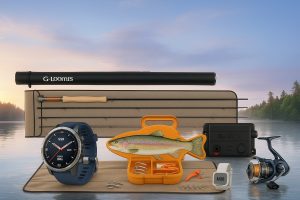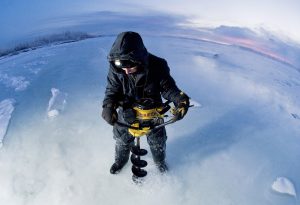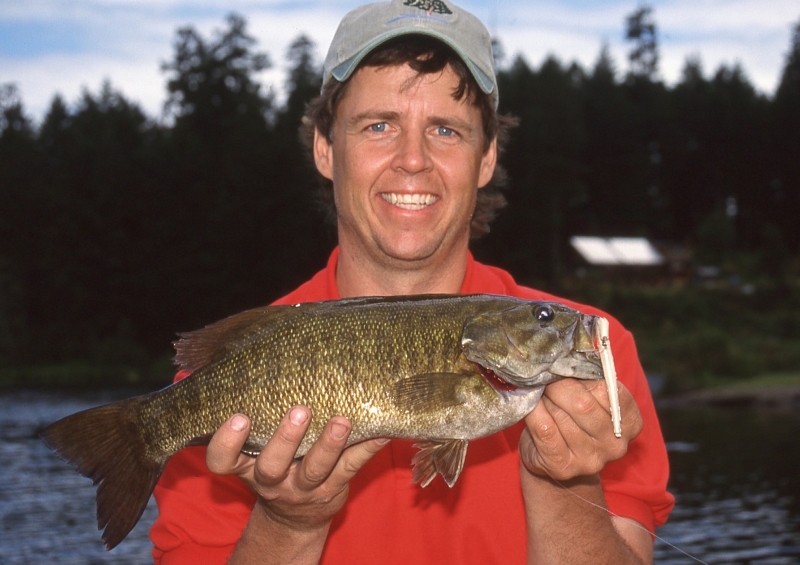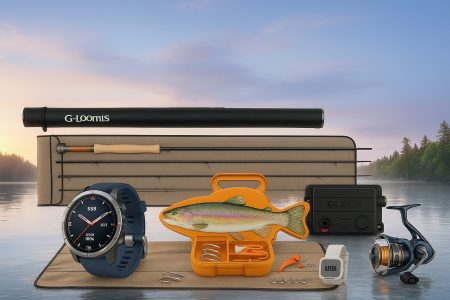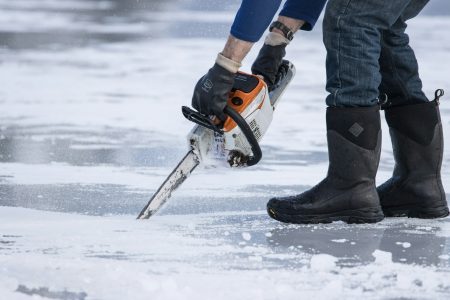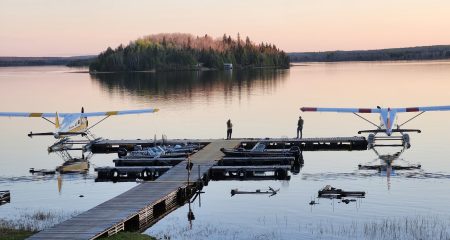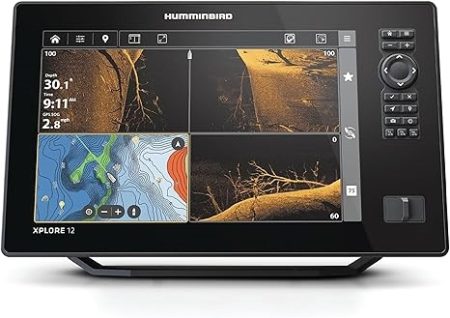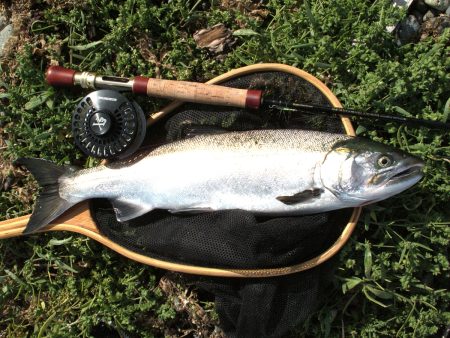“Bass my …” “Wait a minute,” I pleaded, trying to calm the agitated man down.
“I paid good money to come hear you talk, and you’re talkin’ about bass. We ain’t got no bass out here. They live down south and out there in Ontario.” There was a real disdain in the way he said Ontario. “Au contraire my good friend,” I thought to myself. I would have said it out loud but was afraid of the response it might have elicited from the burly gentleman. I was in British Columbia at a sportsmen’s show giving seminars on fishing and just thought I’d throw a little bass information in. It seemed appropriate at the time, considering the quality of bass fishing this great province offers, but I decided common sense should prevail and quickly switched the topic to mooching for chinooks.
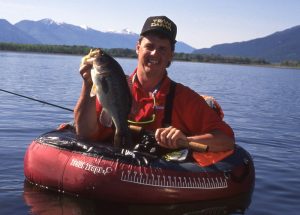
It’s sad in a way, but we out here in the west have been almost brainwashed into believing that bass are evil. They are a product of eastern Canada, like gun control legislation. But the fact is, bass have a firm foothold in the western provinces and offer opportunities our eastern counterparts could only dream of. As one of my fishing buddies said when we arrived at a deserted lake in B.C., “It’s like finding Utopia and not having to share it with anyone.”
Bass Fishing in MANITOBA
While Manitoba definitely receives more recognition for the excellent catfish and walleye angling she offers, the Keystone province is also home to a pretty healthy population of trophy bass. Limited primarily to the southeastern corner in Whiteshell and Nopiming Provincial Parks, lakes like George, Crowduck, Tooth and Horseshoe top out the Master Angler’s list for smallmouth, although there is some great bass action to be found in Duck Mountain Provincial Park’s Wellman Lake.
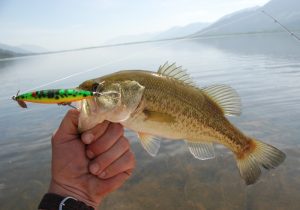
Largemouth are not overly prevalent, with Mary Jane Reservoir and Fort Whyte Ponds being the most likely destinations if it’s trophy bass you are after. The first largemouth I ever caught came from Lake Minnewasta, in southwestern Manitoba, but it is doubtful that this tiny reservoir holds bigmouths anymore.
Bass Fishing in SASKATCHEWAN
While certainly not one of Canada’s renown bass destinations, Saskatchewan can claim the bragging rights to the best largemouth fishing on the prairies. Located just south of Estavan, Boundary Reservoir provides a temperate home for an excellent population of largemouth bass. This lake remains artificially warm year ’round, compliments of the cooling water from the nearby coal-fired generating plant.
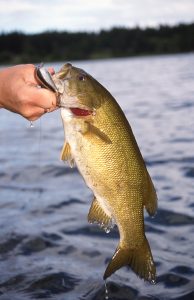
The first episode Bob Kirkpatrick and I ever shot of the Gone Fishin’ television series was on Boundary Reservoir. Even though a brutal cold front blew in, we still managed to hook up on a number of scrappy bass. I have returned several times since and always been treated to excellent angling. My only complaint is the amount of coal dust that accumulates in your boat during the course of the day.
I keep hearing rumors of smallmouth bass being found in some of the southwestern towns’ water reservoirs. More specifically, I had one angler swear to me that he had taken bass in Parkbeg’s reservoir. I fished this body of water a couple times and didn’t hook any bass, but I can’t say for certain if they ever existed or not. I’d be interested in hearing from any anglers that could substantiate or dispel this rumor. I’m always up for exploring a new bass lake.
Bass Fishing in ALBERTA
Does she or doesn’t she, have bass that is. There have been countless attempts at stocking bass in Alberta that date back to the early 1900s and there is even a documented provincial record for smallmouth, but whether bass still exist in the province is doubtful. The most recent stocking was in Island Lake, from 1977 to 1984, and in 1989, R. Shewchuk caught a four-pounder that is still recognized as the provincial record. With a life span of 20 years or more, it is possible that some smallmouth still exists in Island but conversations with local anglers have led me to believe that they too have gone the way of the dinosaurs.
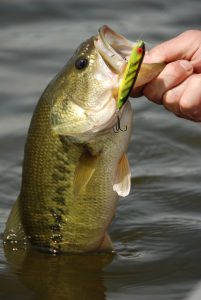
Rumors, rumors, rumors…. some of my best trips have come from following tips I’ve gained from questionable sources or overheard in tackle shops. Some of my most unproductive trips have originated this way as well. One persistent, but unverified, rumor that keeps surfacing is the existence of largemouth bass in the reservoir associated with Sheerness Generating Plant. If there are bass in these temperate waters, they are undoubtedly the result of illegal stocking, but I would love to know for certain. A little research may be required this summer.
Bass Fishing in BRITISH COLUMBIA
British Columbia is without question the best province for bass fishing in Canada. No, not western Canada. Canada! I would venture to guess that the Canadian record for both large and smallmouth has been caught and eaten over a dozen times in B.C., without the anglers ever knowing what they did. It’s only been in the last couple decades that bass have even been recognized as a gamefish and afforded some protection by the Ministry of Environment.
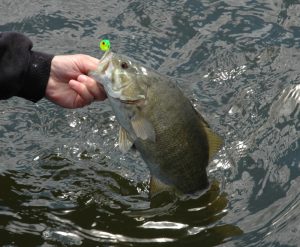
Bass have never been officially stocked in British Columbia. Without the government’s blessing, however, bass are firmly established in both the east and west Kootenays and their range is increasing. Each time I make a trip to the interior, I learn of a half-dozen more ponds and lakes that contain either large or smallmouth bass. It seems British Columbia anglers have a real affinity for this species and are helping spread them in what can only be described as an uncontrolled rash of illegal introductions.
The Kootenay Region of British Columbia, especially around the towns of Cranbrook and Creston, has the largest number of lakes containing largemouth bass and it seems that illegal stocking is increasing this number each year. As very little data has been collected on the largemouth in the region, no one is really sure how many waters have bass in them but there are several dozen lakes with catchable populations.
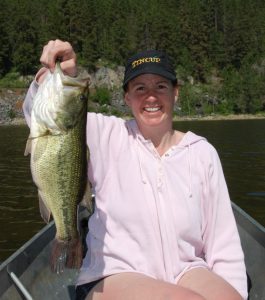
Duck Lake, near the town of Creston, is certainly the best known and in the past decade has really increased in popularity. It sees four to five thousand angler days per year and definitely has bass in excess of 10 pounds swimming in its milfoil-choked waters. Other lakes in the region, most notably Baynes, Tie, Suzzane, Jim Smith, Wasa and Lund, have loads of largemouth, but they seem to top out at about four or five pounds. Each time I make a trip to Cranbrook, I do a little exploring and seem to stumble upon yet another 20 acre lake that is teeming with largemouth. I’ve even heard rumours of bass being caught in the southern end of Columbia and Kootenay Lakes and have no reason to doubt it. There are also a number of waters around Trail that are also starting to produce bass in good numbers. The most notable are Erie Lake and the Pend O’Reille River but again, there are countless smaller ponds and lakes in the area that undoubtedly contain largemouth. British Columbia seems to have an active, and illegal, bucket brigade when it comes to transplanting bass.
It is in the Okanagan, however, where the stories about big bass abound. Vaseux Lake, just south of Penticton, is the source of the majority of them. One angler I spoke with recalled a tournament on Vaseux in the 80s, where a 12 pound specimen took the first-place prize home.
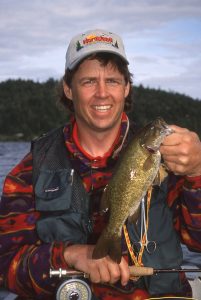
Osoyoos Lake is located just south of Vaseux and is another one of the bass waters reported to harbour 10-pound-plus giants. Both lakes became infested with milfoil in the early ‘70s, and the bass have really taken off. While milfoil is an unwelcome addition to southern British Columbia Lakes, it has been a real boon for the largemouth. Most B.C. lakes have a distinct lack of cover and suitable spawning habitat, and the milfoil really helped fill the niche.
Christina Lake is another B.C. bass lake that is growing in notoriety. While not noted for huge bass, it does contain both largemouth and smallmouth. It is the most easterly lake in the province with documented populations of smallmouth bass but I have heard rumors of a lake just north of Trail that may have smallmouth in it courtesy of the bucket brigade.
Before packing up your trusty bass boat and heading west, there are a few things you should know about B.C. bass fishing. The majority of it is done from a row boat or float tube. Both Duck Lake and Vaseux are Federal Bird Sanctuaries and the use of any type of motor, including electric is prohibited. Several of the other bass waters in the East Kootenays are restricted to the use of electric motors only. Osoyoos and Christina are the only lakes where a decent sized boat can be used. While the majority of these lakes are not large, one must be prepared to row several miles in a day.
For the more adventurous, a trip to Vancouver Island will land you in the middle of smallmouth Utopia. Only smallmouth are currently found on the Island and every time I talk with an angler, the name of a new smallmouth fishery pops up, but as near as I can figure, there are in the neighborhood of a dozen established smallmouth fisheries on Vancouver and Salt Spring Islands.
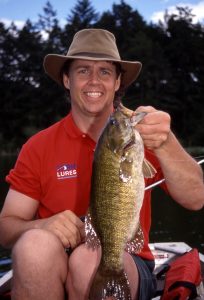
Spider Lake is typical of bass waters in this region; small in stature but mighty in quality. This 57-hectare lake, located west of Qualicum Beach on the Spider Lake Road, has a small day-use area where boats can be launched. Power boats, including electric motors are not permitted. Don’t expect to hook up on loads of bass in Spider but if it’s quality you’re after, this one is hard to beat. Six-pound bass are not unheard of here and it is common to land several in the three to four-pound range during a day trip. I have heard from reliable sources that there are smallies approaching eight pounds in Spider but the largest I’ve taken is six pounds.
Quennel Lake is a picturesque 120-hectare lake that could just as easily be found in southern Ontario as in western British Columbia. Surrounded by rolling farmland and loaded with bulrushes, water lilies and aquatic life, Quennel is rated by many west-coast bass anglers as the jewel of the Island. Smallmouth routinely reach five pounds here and there are countless stories of six, seven and eight-pound bass coming from these temperate waters. Rocks are scarce in Quennel but in the couple places they exist, you are guaranteed of hooking up on big bass. Manmade structures like docks and swimming platforms also harbour their share of big smallmouth. It always seems to be the big ones that get away, but during my last trip to Quennel, I hooked up on a bass under a swim platform that I swear was over seven pounds. Unfortunately, he threw the hook on one of his spectacular leaps. Quennel Lake is located south of Nanaimo, off of Highway 19 and power boats are permitted, although there is an eight km/h speed restriction on parts of it.
Long Lake is located adjacent to Highway 19, just north of Nanaimo. Surrounded by a highway, golf course and several hotels, Long Lake offers little in the way of solitude but what it lacks in aesthetic beauty it makes up for in fishing quality. Bass are fairly numerous in this tiny 34-hectare lake and they do grow to large proportions. How large is again a matter of debate as there are no official records kept for bass in British Columbia, but six-pounders are certainly not out of the question. Power boats are permitted on Long Lake, although a small aluminum boat and electric motor are more than adequate.
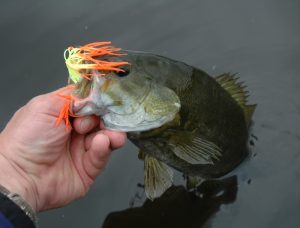
Elk and Beaver Lakes, located just north of Victoria, are interconnected bodies of water, comprised of 224 hectares. Located just off of Highway 17, Elk and Beaver are extremely popular with the boating crowd, so if it’s seclusion you are after, don’t look here. If it’s big bass, however, that strikes your fancy, you might just have found heaven. Bass average three pounds here, and again, rumors persist about smallies up to eight pounds. Although not as prolific as some of the other Island waters, anglers often hook up on a dozen or more bass in an afternoon. It is the huge average size of the bass in these lakes that is the real attraction. An illegal introduction of yellow perch has provided a readily available source of feed, although biologists are not overly impressed.
Sixty-hectare Langford Lake is located 16 kilometers north of Victoria and is only recently receiving the attention it deserves from bass anglers. Access is somewhat limited and the lake is extremely busy during the summer months but if you are willing to put up with the crowds, expect awesome bass fishing. Motorboats are prohibited but the use of electric motors is allowed and greatly aids in getting around the lake. Like other lakes in the area, bass average around three pounds, although how big they can get is anyone’s guess. A small fraternity of B.C. bass anglers works this body of water hard during the evening hours, when the pleasure seekers are snug in their beds, and they are reporting excellent results. The addition of man-made spawning reefs is a great enhancement to this fishery.
St. Mary Lake on nearby Salt Spring Island is rapidly gaining a reputation as a top smallmouth fishery. This is without question the most prolific smallmouth lake I have ever been on. Catches in excess of 100 bass per day are common and when conditions are right, it can be a bass on virtually every cast. This 195-hectare lake is located just north of Ganges. Power boats are prohibited but electric motors are permitted and necessary if you plan on fishing this lake effectively. Bass can be found virtually everywhere, from suspended in the middle of the lake, to the depths, to only inches of water, although I’ve taken my biggest specimens from thick stands of pencil reeds. Bass average in the 1.5 to two pound range and top out around six pounds. In my opinion, the opportunity of taking a monster bass is better in some of the big Island lakes but for sheer numbers, St. Mary can’t be beat.
Cusheon Lake is an unassuming 27-hectare lake is located in the central part of Salt Spring and hardly rates a second glance as you drive by. Unless you know what lurks below her surface that is. While not as prolific as St. Mary, Cusheon still provides quality bass action and is ideal for those looking for a little solitude in the seat of a float tube.
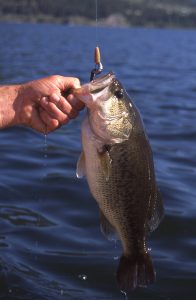
While the above represent some of my favorite and the most popular bass lakes in B.C., this is by no means a complete list. I seriously doubt that anyone knows all of the lakes and ponds that contain bass. Illegal introductions are extremely common and just as biologists start to get a handle on where the bass are, another lake starts producing. A classic example of this is Kawkawa Lake near Hope. It recently gave up an eight-pound smallmouth. This was the first bass reported caught from these waters. This just goes to show how little is known about bass in B.C.
CONCLUSION
While easterners can claim the rights to smog, traffic jams and misguided liberalism, no longer can they brag about their bass fishing. The western provinces unquestionably boast angling that equals, and in my opinion, surpasses what the east has to offer. We’ve just been too busy enjoying the other great angling opportunities western Canada has to offer. But now that there are emerging some serious bass anglers out here, just watch as the record books are rewritten.
Top Seven Baits for Western Canada Bass
Berkley PowerBait® MaxScent The General 5”
Northland Reed Runner Tandem Spinnerbait 3/8 ounce
Rapala Fat Rap
Strike King Bleeding Bait Elite Buzz Bait 3/8 ounce
Heddon Super Spook
Berkley® PowerBait® Power Worm 7”
Bobby Garland Original Gitzit Tube Jig
Per our affiliate disclosure, we may earn revenue from the products available on this page. To learn more about how we test gear, click here.

